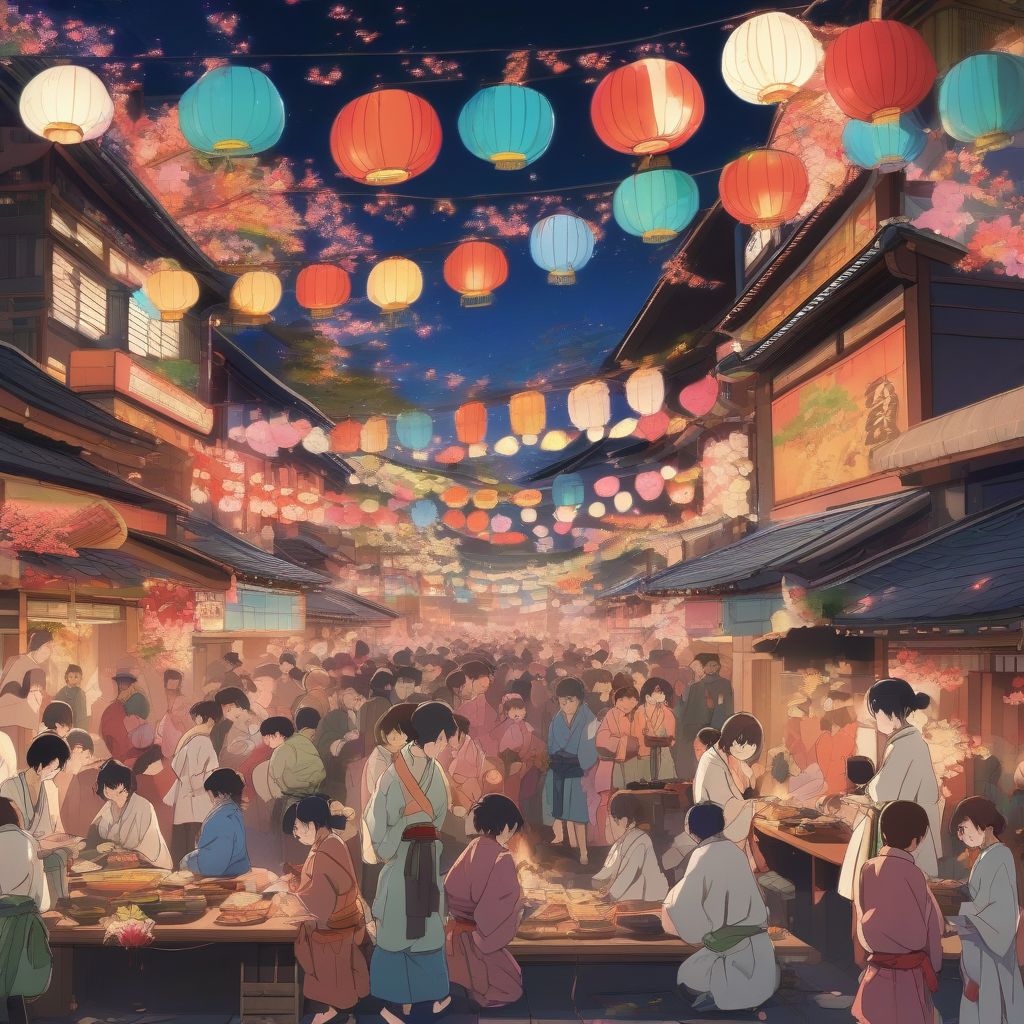Have you ever watched an anime and felt a little lost, like you were missing some unspoken rules? You’re not alone! Anime, like any form of storytelling, is deeply rooted in its cultural context. To truly appreciate these vibrant worlds and captivating narratives, we need to delve a little deeper than the surface. Just like understanding the ingredients of a delicious meal enhances its flavor, appreciating the cultural nuances within anime can significantly enrich your viewing experience.
Deciphering the Cultural Code: Key Aspects to Consider
Understanding the cultural context of anime doesn’t require becoming a scholar of Japanese culture, but a little awareness goes a long way. Here are some key aspects to consider:
1. Values and Social Norms
Anime often reflects Japanese values and social norms, even in fantastical settings. For example:
- Respect for Hierarchy: Notice how characters address each other using honorifics like “-san” or “-sama.” This reflects the importance of social standing in Japanese culture.
- Group Harmony: Many anime emphasize teamwork and cooperation over individualism, reflecting the value placed on group harmony.
- Hard Work and Perseverance: From studying for exams to mastering martial arts, many anime protagonists embody the Japanese work ethic and dedication to self-improvement.
2. Historical Influences
Japanese history is rich and diverse, and its echoes can be found throughout anime.
- Samurai and Feudal Japan: Anime like “Rurouni Kenshin” and “Samurai Champloo” showcase the samurai code of honor and the social structures of feudal Japan.
- Shintoism and Buddhism: These spiritual beliefs permeate many anime, influencing storylines and character motivations. Look out for shrines, festivals, and themes of reincarnation.
- Post-War Japan: Anime like “Grave of the Fireflies” and “Barefoot Gen” offer poignant reflections on the impact of World War II on Japanese society.
3. Everyday Life and Customs
Anime provides a window into the everyday lives of people in Japan.
- School Life: School settings are common in anime, offering insights into the Japanese education system, student life, and social dynamics.
- Food Culture: Pay attention to the food depicted in anime. From elaborate bento boxes to steaming bowls of ramen, you’ll discover the diversity and importance of Japanese cuisine.
- Festivals and Celebrations: Anime often feature traditional Japanese festivals like Obon and New Year’s, showcasing unique customs and celebrations.
 Japanese Festival in Anime
Japanese Festival in Anime
4. Symbolism and Visual Language
Anime employs a distinct visual language, rich in symbolism.
- Facial Expressions: Exaggerated expressions convey emotions effectively. Pay close attention to eyes, eyebrows, and mouth movements.
- Color Palette: Colors often carry symbolic meaning. For instance, red might signify passion or danger, while white can represent purity or death.
- Nature Imagery: Nature plays a significant role in Japanese culture, and this is reflected in anime through the use of cherry blossoms, bamboo forests, and changing seasons.
5. Genre Conventions
Understanding common anime genres can deepen your appreciation:
- Shonen: Targeting young male audiences, shonen anime often feature action-packed stories with themes of friendship, rivalry, and overcoming challenges.
- Shojo: Aimed at young female viewers, shojo anime explore themes of romance, friendship, and personal growth.
- Seinen: Targeting older male audiences, seinen anime often delve into more mature and complex themes.
Beyond the Surface: Tips for Deeper Engagement
- Do Your Research: Don’t be afraid to look up unfamiliar terms, cultural references, or historical events.
- Engage with the Community: Join online forums, attend conventions, or connect with fellow fans to share your insights and learn from others.
- Read Between the Lines: Not everything is explicitly stated in anime. Pay attention to subtle cues, character interactions, and unspoken emotions.
- Keep an Open Mind: Be prepared to encounter different perspectives and cultural values. Embrace the opportunity to broaden your horizons.
The Rewarding Journey of Cultural Exploration
Appreciating the cultural context of anime is an enriching journey that adds layers of depth to your viewing experience. It allows you to connect with the stories and characters on a more meaningful level and provides a fascinating glimpse into another culture. So, the next time you delve into the world of anime, remember that you’re not just watching a show, you’re embarking on a cultural adventure.
[amazon bestseller=”Japanese Culture”]
